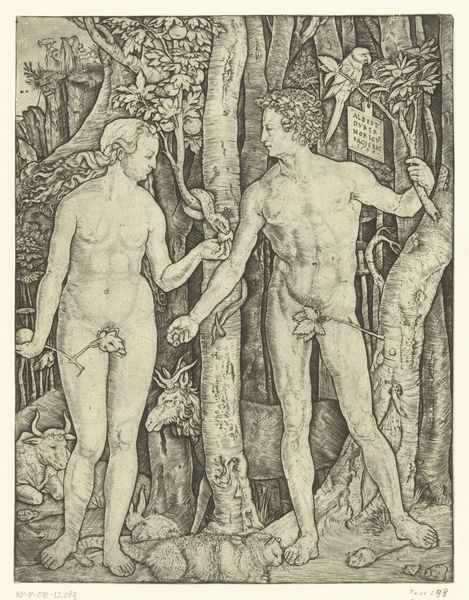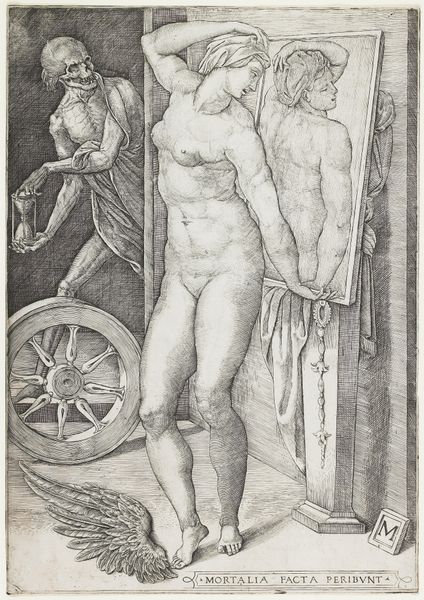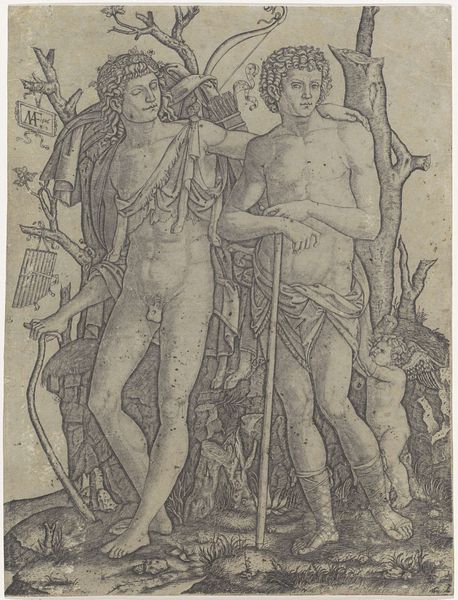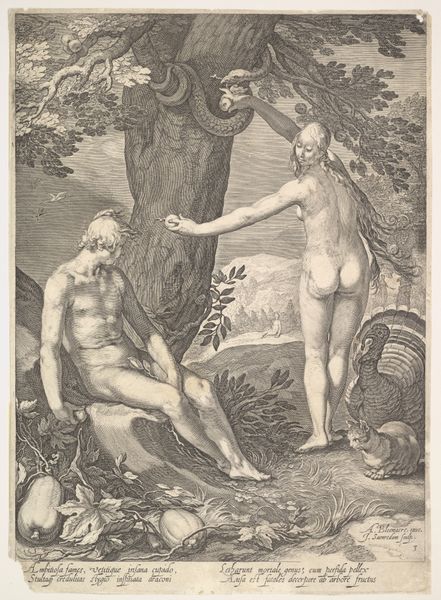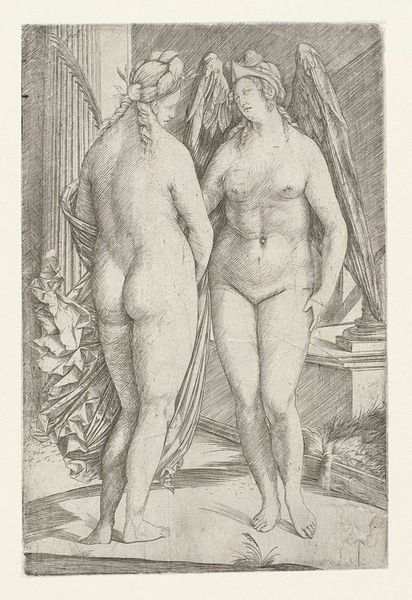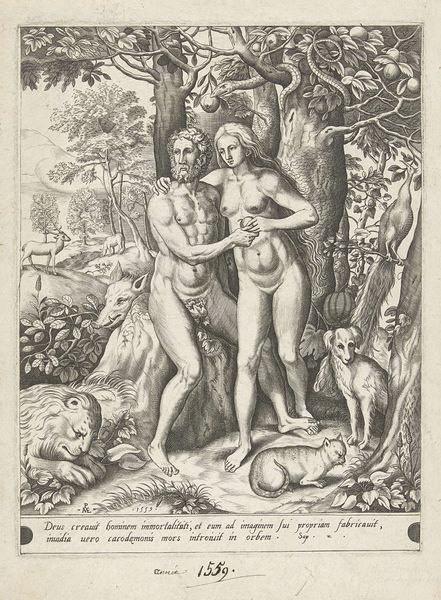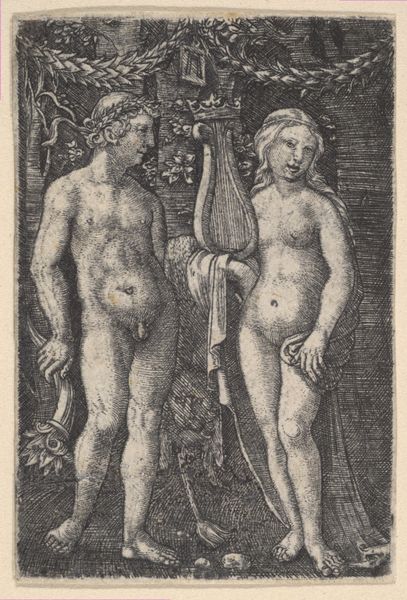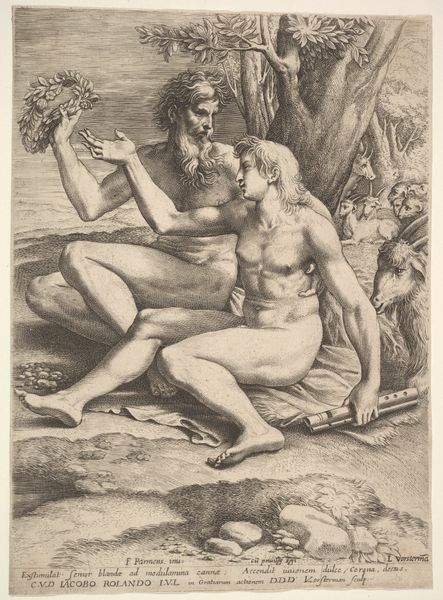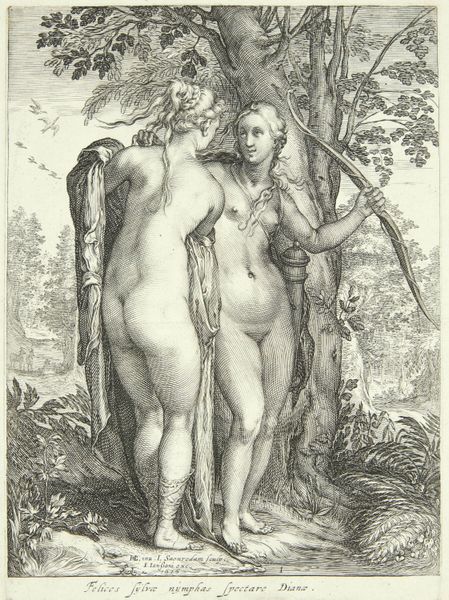
print, engraving
#
allegory
# print
#
landscape
#
figuration
#
genre-painting
#
history-painting
#
northern-renaissance
#
nude
#
engraving
#
realism
Dimensions: 327 mm (height) x 217 mm (width) (bladmaal)
Curator: This is Jan Saenredam’s "The Fall of Man," created in 1605. The artist masterfully used engraving to depict Adam and Eve in the Garden of Eden. Editor: My first impression is one of stillness, an unnerving calm right before a crucial decision. The meticulous detailing, even in the distant animals, adds a tangible weight to the scene. Curator: Precisely. The artist’s deliberate arrangement—the precise placement of Adam and Eve relative to the tree and serpent—highlights a classical composition reminiscent of earlier Renaissance masters. Note how their almost mirrored stances subtly underscore the interconnected nature of their fates. Editor: I find it remarkable how Saenredam foregrounds the textures; look at the way the light plays on the serpent’s scales, seemingly pushing against the surface of the paper itself. What kind of labor went into making a plate with this level of minute rendering and then pressing many copies. The craft becomes meaning. Curator: That’s perceptive. Semiotically, the engraving emphasizes contrasting elements: light and shadow, innocence and knowledge, perfection and corruption. The symbolic weight of the fruit, held delicately in Adam’s hand, is further accentuated by Eve's uncertain gaze. It encapsulates the fulcrum of temptation and its forthcoming consequences. Editor: Indeed. Consider, too, the context in which this print would have been made and consumed. Each print made and distributed represented a potential ripple in the power dynamics. This image had currency beyond the aesthetic in a time of strict church and state control. It speaks volumes to see "original sin" circulating in printed form. Curator: In essence, the aesthetic choices, down to the engraver’s careful linework, work to elicit not only the surface-level biblical narrative, but more broadly human themes. Editor: So, while dissecting its materiality, one gets a glimpse of how information was materialized, packaged and made purchasable at that period in time. Fascinating.
Comments
No comments
Be the first to comment and join the conversation on the ultimate creative platform.
